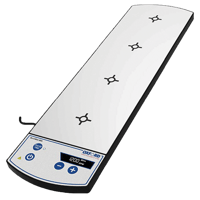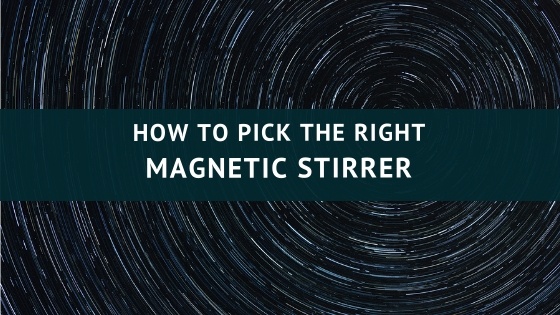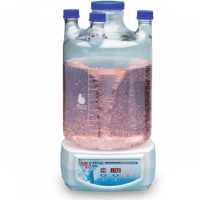Whether you’re home brewing buffers or manufacturing at an industrial scale, finding the right magnetic stirrer for your workflow can increase your output and streamline your process. Make life easier for you and those in your lab - we can help you determine the right stirrer for your lab.
No idea where to start? We’ve put together a few basic questions to ask to point you in the right direction.
What is the maximum volume you need to stir at once?
Although it seems simple, this question narrows your choices to specific capacity models. Manufacturers make small, large, and industrial-sized stirrers depending on the capacity you are expecting to stir. Knowing the max volume and the type of container you will be stirring in will help you decide the kind of stirrer you need.
The MegaMag Genie Magnetic Stirrer is a heavy-duty stirrer with the capacity to mix up to 10 gallons and with the base to support the kind of container that can hold 10 gallons. If you need to mix that much liquid, then you can quickly close in on models like this one, or avoid them if you know you don't need to stir that much.
Will I need to stir more than one container at a time?
There is no need to buy a magnetic stirrer for each vessel you need stirred - look for multi-place stirrers that can stir at multiple positions at once. Some stirrers can hold up to ten containers at once and others can stir as few as 4 spots.
 This one from Oxford Lab Products - the Oxford MS4 - is a 4-place stirrer that can handle up to 400 mL at each position. It has a digital display, so you can choose the exact speed setting (from 15 to 1200 RPM) and duration (1 to 99 minutes) you want every time. It also has a pulse function and can be used on timed or continuous modes. It’s also compact with no moving parts and spill resistant, so it’s built for everyday use.
This one from Oxford Lab Products - the Oxford MS4 - is a 4-place stirrer that can handle up to 400 mL at each position. It has a digital display, so you can choose the exact speed setting (from 15 to 1200 RPM) and duration (1 to 99 minutes) you want every time. It also has a pulse function and can be used on timed or continuous modes. It’s also compact with no moving parts and spill resistant, so it’s built for everyday use.
Do I need a digital or analog magnetic stirrer?
This answer to this question will vary from lab to lab, but essentially boils down to your budget and whether you need your stirring process to be documentable and repeatable.
Analog stirrers are typically less expensive than digital models, but since you are adjusting the speed and/or temperature continuously using a knob, your protocol becomes less objective and harder to document and repeat. If you work in an academic lab, or don’t have strict regulatory requirements and SOP’s, you can probably get away with getting an analog stirrer.
However, if you need to be able to record and repeat your protocol, a digital stirrer will allow you to choose a specific speed setting and temperature.
Will I need a temperature-controlled magnetic stirrer?
As you might have gathered already, not all magnetic stirrers are created equal. Some of them are able to handle 10 gallons of liquid at once, some of them can stir multiple containers at once, and some of them can heat your solution while you stir. Most temperature-controlled magnetic stirrers can also function as a hot plate if you need to heat your sample but not stir it.
Lastly, don’t forget to order extra stir bars! We can’t tell you how many times we’ve misplaced these or had them fall into the dusty crevice between the bench and the wall. Also, having a few different sizes helps when you need to stir in powders and liquids of different consistencies. Buy a few spares with your stirrer and keep them in a drawer to save yourself precious stirring time later.
If all else fails, give one of our reps a call and we’ll point you in the right direction.
Save




